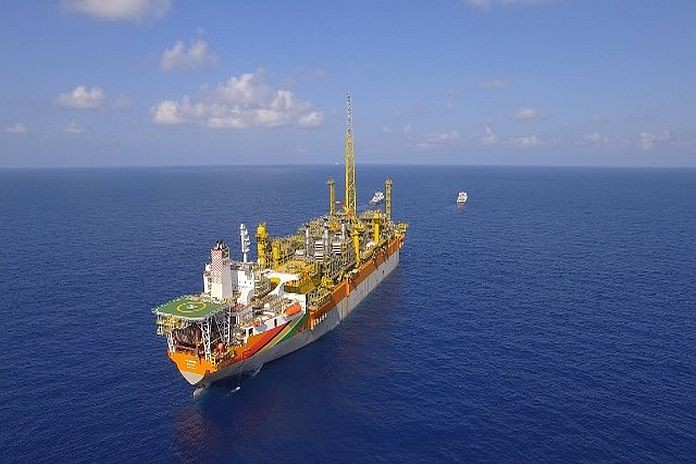GEORGETOWN, Guyana, (DPI) – The ministry of natural resources has clarified that Guyana’s Floating, Production, Storage, and Offloading (FPSO) production increases are planned with a focus on environmental responsibility and operational safety.
These increases are stimulated through a comprehensive production optimisation process, which aims to increase efficiency through the enhancement of existing infrastructure.
This clarification is in response to a narrative being peddled in the local news that ExxonMobil Guyana Limited (EMGL) has breached the safe production limit set out in the Environmental Impact Assessment (EIAs) for its oil projects.
The false narrative alleges that ExxonMobil’s third deep-water development, Payara (Prosperity) is already exceeding the safety limit, producing 230,000 barrels of oil per day (bpd), even though the vessel was designed to produce 220,000 bpd.
In a statement issued on Friday, the government affirmed that the increase in capacity was undertaken after extensive technical evaluations that ensured it can be done safely and sustainably. The statement clarified that the production limits set out in the EIA are a base case scenario, and do not account for production optimisation strategies.
“Environmental Impact Assessments (EIAs) are not meant to deliberate on production limits for FPSOs. Any changes to the project design will require approval. Typically, after commissioning, production startup begins with the base case and is gradually increased to safely optimised levels,” it states.
Additionally, the EIA includes an annual average production optimisation oil rate. According to the ministry, this annual rate acts as a ceiling to keep optimisation levels in check. And so, even though the base case production levels may be exceeded after commissioning, this annual average production optimization oil rate is never exceeded.
“These levels have not been exceeded by any optimisation events,” the statement emphasised.
It continued, “Each aggregated increase in production level is accompanied by a full system surveillance (including well, subsea, and topsides facility) over a 24-hour period. Surveillance involves observations and studies on critical aspects of FPSO operations, including but not limited to process safety, pipe vibrations and fluid velocity assessments, fluid separation efficiency, plant stability, and well and reservoir behaviour,” the ministry explained.
To demonstrate this point, the ministry outlined that the Liza Phase 1 (Destiny)’s original maximum planned production capacity per day was 126,000 barrels per day. However, optimisation efforts have led to a successful increase in capacity to 155,000 barrels per day. Based on the most recent production figures, the Liza Destiny FPSO is producing 160,000 barrels per day.
The statement notes that the Liza Phase 1 has undergone two successful optimization phases, boosting its daily output by an impressive 42,000 barrels, which surpasses its original design capacity.
“Similarly, both Liza Phase 2 (Unity) and Payara (Prosperity) have experienced increases beyond their original design capacities after their initial optimization. It’s worth noting, however, that the authorization for Payara’s new capacity level is still in the review process,” the ministry adds.
The ministry’s statement further indicated that all production increases are a testament to effective project management and the successful implementation of optimisation strategies.





